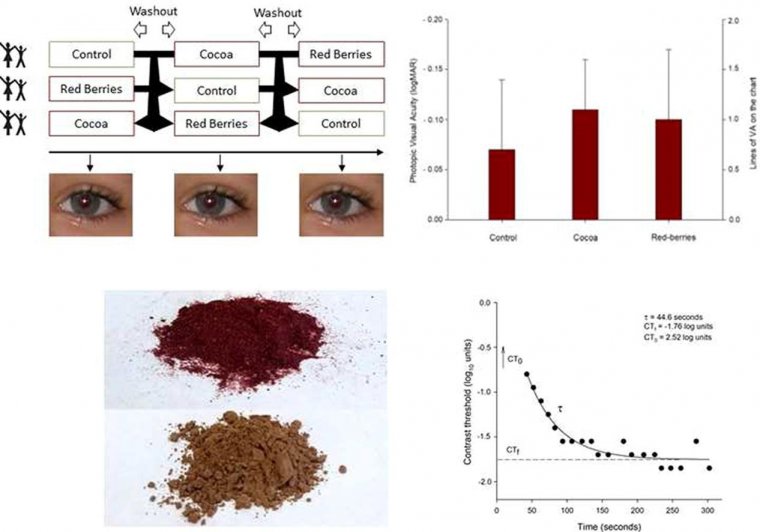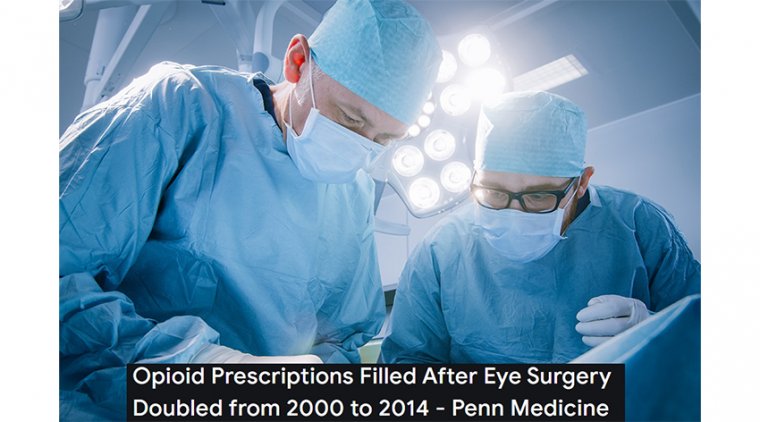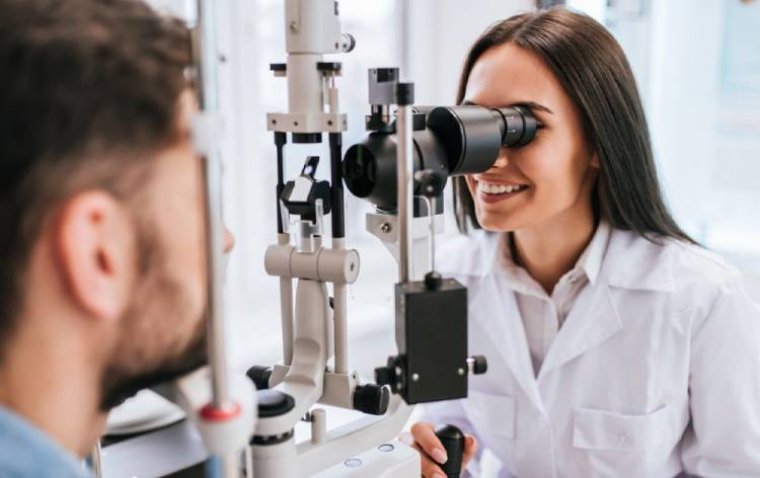
“Cocoa” Increases The Sharpness Of Vision
The acute effect of cocoa and red-berries on visual acuity and cone-mediated dark adaptation in healthy eyes. Researchers at the Universidad Complutense de Madrid have found that consuming pure cocoa can help improve vision in daylight.
This recent research sheds light on how specific natural foods, such as cocoa and red berries, may positively impact eye health, particularly visual acuity. Understanding these effects could have implications for dietary recommendations aimed at enhancing visual performance.
Cocoa and Improved Visual Acuity in Daylight
A group of Spanish researchers found that consuming 2.5 grams of pure natural cocoa powder could improve “visual acuity” in healthy young adults in daylight.
Visual acuity (VA) refers to the sharpness or clarity of vision, which depends on the eye's optical factors and the neurological pathways that carry visual information to the brain. The research suggests that cocoa flavanols might enhance these pathways, leading to better vision under photopic (daylight) conditions.
Understanding Visual Acuity: How Cocoa Affects the Retina
The retina plays a central role in vision, being a highly vascularized tissue with significant metabolic and oxygen needs. Cocoa, which is rich in flavanols, appears to improve blood flow, potentially contributing to better retinal function and visual sharpness. This is an essential aspect for those interested in natural ways to support healthy vision.
Study Design: The Role of Polyphenols and Flavanols in Vision
The retina is a highly vascularized tissue with a high metabolic and oxygen demand responsible for human vision.
Considering that the polyphenolic flavanols and anthocyanins have been shown to be beneficial for endothelial function and cerebral blood-flow, an acute randomized and controlled crossover trial with two different sources of polyphenols, anthocyanins from red-berries and flavanols from cocoa, was designed to better understand the effect of polyphenols on visual acuity (VA) and cone-mediated dark adaptation (DA).
Flavanols and anthocyanins are well-known for their antioxidant properties and vascular benefits. These compounds were tested to determine their effect on vision, including daylight visual acuity and cone-mediated dark adaptation, which is crucial for transitioning from bright to low-light conditions.
Thirty-seven healthy subjects (22.1 ± 2.0 years old) participated in the acute intervention for three times (red-berries, cocoa or vehicle-control) with a washout period of two weeks in-between.
The study involved thirty-seven young adults, with interventions including the ingestion of cocoa, red berries, or a control substance. The crossover design, with a washout period, ensured that the effects observed were directly linked to the specific interventions.
VA under photopic and low luminance (mesopic) conditions, DA or dynamic of recovery of contrast threshold (CT) following near-total photopigment bleach for 5 min, urine total polyphenols, theobromine and antioxidant power were measured in the three study-arms after 2-hours ingestion of the study-food.
3-hours postprandial urine showed higher levels of total polyphenols after ingestion of cocoa flavanols or red-berries anthocyanins in comparison with the vehicle-control and higher levels of theobromine only for the cocoa group.
Higher levels of polyphenols were found in the urine after the ingestion of cocoa or red berries, indicating increased antioxidant activity. Theobromine, a compound found in cocoa, was notably higher only in the cocoa group, suggesting that it may play a role in enhancing the visual benefits linked to cocoa consumption.
Results: Improved Photopic Visual Acuity with Cocoa
There was an increase in photopic VA with cocoa flavanols that with red-berries anthocyanins did not reach statistical significance. Both, cocoa and red berries, failed to improve mesopic VA and the cone time constant for contrast recovery and final CT of DA.
The study demonstrated a significant improvement in photopic visual acuity with cocoa flavanols compared to red-berries anthocyanins, which did not show statistically significant results. However, the lack of impact on mesopic VA and cone-mediated dark adaptation suggests that these benefits may be limited to specific visual conditions.
Conclusion: Potential Benefits of Cocoa Flavanols for Vision
In healthy eyes, photopic VA improved significantly after cocoa flavanols ingestion and showed a non-significant trend to an improvement with red-berries anthocyanins. In parallel, TPC in 3-hours urine was increased for both cocoa and red-berry diets in relation to the control diet.
Theobromine levels in 3-hours urine were increased only for the cocoa diet. However, mesopic VA was not affected by any of the polyphenolic diets assayed in our conditions.
Cocoa flavanols appear to have a beneficial effect on daylight visual acuity, possibly due to their influence on retinal blood flow. The lack of effect on mesopic vision suggests that these compounds may not influence low-light vision in the same way. The presence of theobromine, unique to the cocoa diet, might be an important factor in explaining these effects.
Contrast recovery time for cone-mediated DA and final CT were unaffected by cocoa flavanols or red-berries anthocyanin.
This work highlights the need for new research that delves deeper into the effect of flavanols, anthocyanins and methylxanthines on visual acuity and attention, both in acute and chronic interventions.
The study opens the door for further research into the effects of flavanols, anthocyanins, and methylxanthines on various aspects of vision. Both acute and chronic studies will be necessary to fully understand how these compounds affect visual performance and whether these benefits can be extended to individuals with visual impairments or other health conditions.
(1).jpg)










